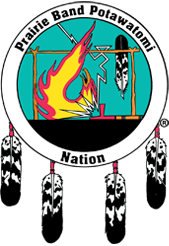November 20, 2014 –
WASHINGTON, D.C. – Deputy Secretary of the Interior Mike Connor today announced that the Department’s Land Buy-Back Program for Tribal Nations (Buy-Back Program) has paid more than $225 million to individual American Indians for restoring the equivalent of 375,000 acres to tribal governments during the Program’s first year of sending offers. Connor also announced 21 additional locations where the Program will begin implementation through the middle of 2017, bringing the total number of locations actively engaged in the Program to 42.
“We have turned the words of the Cobell Settlement into actions this year, taking significant and lasting steps toward our goal of making sure every available dollar is invested in land for tribal communities,” said Deputy Secretary Connor, who chairs the oversight board of the Program, created to ensure the highest level of accountability within the Interior Department. “The Program is an exceptional opportunity that cannot be taken for granted. That is why we are committed to learning from every sale, and every location, to make adjustments where necessary that are transparent and fair to ensure that landowners are given every opportunity to make informed decisions about the potential sale of their land at fair market value.”
The Buy-Back Program embodies the priorities set forth by the Obama Administration’s goal to build effective partnerships with American Indian communities, promote sustainable economic development and tribal culture and protect tribal lands. The Program generates new opportunities to work more efficiently, stimulate community dialogue and facilitate land use planning, while ensuring that lands stay in trust for the benefit of tribal nations.
The 2014 Status Report includes critical observations that have been made during this year’s implementation and details opportunities for increased feedback and input from tribal communities, including a scheduled March 2015 Listening Session to be hosted by Deputy Secretary Connor. Through experiences at initial locations and collaboration with tribes to date, the Program has also identified and outlined opportunities for improvement in all phases of its implementation.
The Buy-Back Program has also expanded its schedule of American Indian communities (in alphabetical order below) where land consolidation activities – such as planning, outreach, mapping, mineral evaluations, appraisals or acquisitions – are expected to take place through the middle of 2017:
- Agua Caliente Band of Cahuilla Indians of the Agua Caliente Indian Reservation, California
- Arapaho Tribe of the Wind River Reservation, Wyoming and Shoshone Tribe of the Wind River Reservation, Wyoming
- Bad River Band of the Lake Superior Tribe of Chippewa Indians of the Bad River Reservation, Wisconsin
- Blackfeet Tribe of the Blackfeet Indian Reservation of Montana
- Cabazon Band of Mission Indians, California
- Confederated Tribes and Bands of the Yakama Nation
- Confederated Tribes of the Colville Reservation
- Crow Creek Sioux Tribe of the Crow Creek Reservation, South Dakota
- Fond du Lac Band of the Minnesota Chippewa Tribe, Minnesota
- Lower Brule Sioux Tribe of the Lower Brule Reservation, South Dakota
- Nez Perce Tribe
- Ponca Tribe of Indians of Oklahoma
- Quechan Tribe of the Fort Yuma Indian Reservation, California & Arizona
- Round Valley Indian Tribes, Round Valley Reservation, California
- Salt River Pima-Maricopa Indian Community of the Salt River Reservation, Arizona
- Shoshone-Bannock Tribes of the Fort Hall Reservation
- The Osage Nation
- Three Affiliated Tribes of the Fort Berthold Reservation, North Dakota
- Turtle Mountain Band of Chippewa Indians of North Dakota
- Winnebago Tribe of Nebraska
- Yankton Sioux Tribe of South Dakota
“In addition to the important momentum the Program has developed thus far, today’s announcement of 21 additional locations for implementation demonstrates our commitment to moving as swiftly as possible to ensure that the program has the widest possible impact across Indian country over the life of the program,” said Assistant Secretary – Indian Affairs Kevin Washburn. “I am confident that lessons learned by the Program staff so far, will be swiftly adapted, increasing flexibility and ensuring the Program’s ability to succeed across a diverse range of tribal communities, each presenting different challenges.”
The Cobell Settlement provided $1.9 billion to purchase fractional interests in trust or restricted land from willing sellers at fair market value within a 10-year period. Individuals who choose to sell their interests will receive payments directly in their Individual Indian Money accounts. Consolidated interests are immediately restored to tribal trust ownership for uses benefiting the reservation community and tribal members.
There are approximately 245,000 owners of nearly three million fractional interests, spanning 150 Indian reservations, who are eligible to participate in the Buy-Back Program. This new total of 42 locations represents 83 percent of all outstanding fractional interests.
Sales of land interests will also result in up to $60 million in contributions to the Cobell Education Scholarship Fund. This is in addition to the amounts paid to individual sellers, so it does not reduce the amount landowners receive for their interests. Already, Interior has transferred more than $4.5 million to the Denver-based American Indian College Fund which administers the fund with 20 percent directed to the American Indian Graduate Center in Albuquerque, N.M. The scholarship fund is overseen by a five-member Board of Trustees. Initial scholarships are expected to be awarded in 2015.
For more information, go to: >http://www.doi.gov/buybackprogram<.
